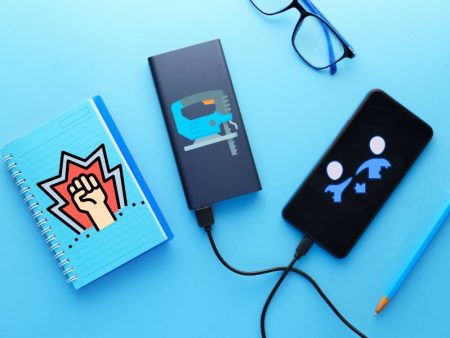You know that spark when someone says your name? In a video ad? It’s like the screen is looking right at you. That personal touch—that whisper of recognition—it hits differently. Personalized video marketing: is it really that powerful, or just another buzzword? Let’s dig in and find out.
What Is Personalized Video Marketing Anyway?
Imagine receiving a marketing email—yawn. Now imagine that same campaign as a video, but with your name, your preferences, maybe even your face or voice, woven in. Not creepy—it’s smart. Brands are no longer shooting one-size-fits-all commercials. They’re crafting dozens, hundreds, thousands of unique versions for each viewer.
That’s personalized video marketing: using AI to tailor content that feels deeply, impressively personal.
The Science of Feeling Seen
Why does personalization work? Simple: emotion. Our brains light up when we feel recognized. According to studies, personalized content spikes brand recall and click-through rates. But let me be real: stats are great—but do they mean you as a marketer or a professional content creator will feel the impact? Let’s talk practical wins and real-world downsides.
Real Talk: Story of a Small Biz
Jump back a year. I chatted with Marie, who runs a boutique candle shop. Sales were… meh. So she tested a personalized video campaign: each customer got a short clip with their favorite scent mentions, maybe a thank‑you note at the end. Delivered it through email. Guess what? Open rates jumped by 45%, and sales doubled in the next two weeks.
She didn’t need Hollywood-level production. Just a clean template, some customer data, and a smart tool. The results? “I felt like I was talking to each of them—not at them,” she told me. Powerful stuff.
The Magic Behind the Tech
So how does this wizardry work? Here’s a simplified breakdown:
- Data input: Name, product interest, purchase history, maybe even geographic info.
- Template creation: A base video with customizable fields—“Hello [Name]!”, “We noticed you love [Product X]”.
- AI automation: That’s where the AI Video Generator No Censorship comes in—flexible, free to say what you need, without being tripped up by filters.
- Personalization engine: Merges data with template, spits out a customized video variants—often hundreds or thousands.
Then distribution: email, social, SMS, whatever fits your funnel. Boom—tailored messages at scale.
Does It Actually Build Trust?
Short answer: yes—when done right. Let me explain.
A well-personalized video is more than flashy—it says “We get you.” It shows you’ve noticed their name, their interest, their story. And in marketing, that matters. But authenticity is clutch here. Done half-heartedly? “Hi [Name]” slapped onto a generic stock clip feels insincere—like a mask.
Here’s where empathy comes in: when brands script these videos, the tone has to align. Warm, genuine, helpful. You’re not selling—you’re connecting.
A Cautionary Tale
I once saw a company send personalized birthday videos to customers—but they got the wrong birthdays. Oops. Instead of delightful giggles, there was confusion: “Why is this reminding me I’m 42?” Not great.
Lesson: clean data is everything. Garbage in, garbage out. If you’re using AI, invest time ensuring your inputs are accurate and your logic solid. The tech is sharp—but it only reflects the quality of what you feed it.
What About Privacy?
I know what you’re thinking: is this diving too close to Big Brother territory? Ethical concerns are real. Your customers need to know what data you’re using. Consent matters. Without transparency, personalization feels invasive—like you’re peering where you shouldn’t.
My advice? Start with opt-in personalization. Say: “We’d like to make this video more personal—may we use your first name?” That simple line builds trust before the script even rolls.
Beyond Names: Deep Customization
Sure, name insertion is eye-catching. But the real power lies in contextual relevance. Picture a scaffold:
- Name: “Hey Sarah!”
- Product or interest: “We noticed you’ve checked out our lunar-themed mugs.”
- Past behavior: “Looks like last month you loved our herbal teas.”
- Suggested upgrade: “Ever thought about pairing those with our new hemp-infused blend?”
Each layer feels thoughtful—like someone is listening. That’s not just personalization; that’s strategy meeting empathy.
AI Girlfriend With Video—Not What You Think
Now, this might sound out there—but hear me out. Tools like the AI Girlfriend With Video show just how far AI can go in simulating personal connection. You chat with this virtual companion, and it responds in video form—complete with facial expressions, emotional tone, the works.
That’s not something you’d use directly in marketing (unless you’re running a niche campaign!), but it does illustrate the potential. If AI can simulate emotional presence at that level, imagine what it can do for customer engagement. It’s not creepy—it’s contextual.
Measuring Success: What to Look At
Okay, here’s what metrics you should care about in personalized video campaigns:
- View-through rate: How many people actually watched the video?
- Engagement: Clicks, shares, replies…
- Conversion lift: Did personalized videos outperform generic ones?
- Brand sentiment: Are people commenting with emotions? (“I actually smiled at this!”)
If view-throughs and conversions are consistently higher than your baseline, personalization is paying off.
Templates vs. Fully Dynamic Content
Let’s be clear: you don’t need to build thousands of radical head-turners. Often, semi-dynamic templates do the job beautifully:
- Open: “Hey [Name],”
- Body: “We have something we think you’ll love—based on your interest in [Product].”
- Call-to-action: “Check out the full line here!”
If you want to go further, use dynamic visuals: show their last purchased item, add local weather, or highlight upcoming local events. It all signals relevance.
Emotional Nuance Wins Hearts
Here’s something I feel passionate about: personalization can’t just be a gimmick. It has to feel human. Text, tone, structure—these elements matter so much. A video that starts with “Hey [Name], wanna save 20%?” feels transactional. Start with empathy instead: “Hey [Name], we know life’s wild—juggling work or family… that’s why we think you’d love this.”
It’s a two-way street: make the viewer feel heard before you start talking about price or features.
Roadblocks to Be Aware Of
- Data hygiene: as mentioned, messy data ruins it.
- Scalability: generating thousands of videos is easy—distributing them correctly can be harder.
- Cost: some AI video platforms charge per minute or per video.
- Template fatigue: using the exact same structure for every person burns out. Rotate styles, tones, visuals.
Those are fixable with good governance. Just don’t ignore them.
What the Future Might Bring
Picture this: you sign into a platform, upload your CRM segment, choose your style—and AI spins up videos with unique visuals, matching music, and personalized CTAs. Even dynamic length—shorter for mobile scrollers, longer for deep divers.
Then, it measures engagement. Adapts future scripts. Learns which emotional tone works best for which audience. It’s personalization on autopilot—but with strategic oversight.
That future isn’t far off. We’re already seeing early versions now.
Short Summary: Does It Work?
- ✅ Yes, if it’s real: “Hey [Name]” only cuts it if the tone is thoughtful.
- ✅ Yes, if it’s clean: good data is non-negotiable.
- ✅ Yes, if it respects privacy: consent is essential.
- 🚫 No, if it feels generic: don’t half-do it.
Bottom line: personalization works not because it’s high-tech—it works when it’s human.
How to Start Today
Here’s your quick start guide:
- Pick a tool with solid AI personalization and flexible output—like AI Video Generator No Censorship for freedom in tone.
- Segment your audience: VIP customers, browsing-only visitors, recent buyers…
- Draft a friendly script template with placeholders.
- Clean your data—name accuracy, purchase history.
- Run a test with a small segment. Measure view rates, conversions, replies.
- Iterate. Refine tone, visuals, length. Scale slowly.
You’ll learn more in week one than from months of theory.
Final Thoughts
Personalized video marketing isn’t a gimmick—it’s a genuine way to connect. And when you connect, people listen. They remember. They respond.
Yes—it’s powered by AI. But the secret sauce isn’t technical—it’s emotional intelligence. It’s what you say, how you say it, and why you care.
So, does it work? Absolutely—when it’s done with care, creativity, and respect.
Got questions? Tried personalized video marketing before? I’d love to hear your stories, successes, or struggles. Drop a comment below—we’re all learning together.


